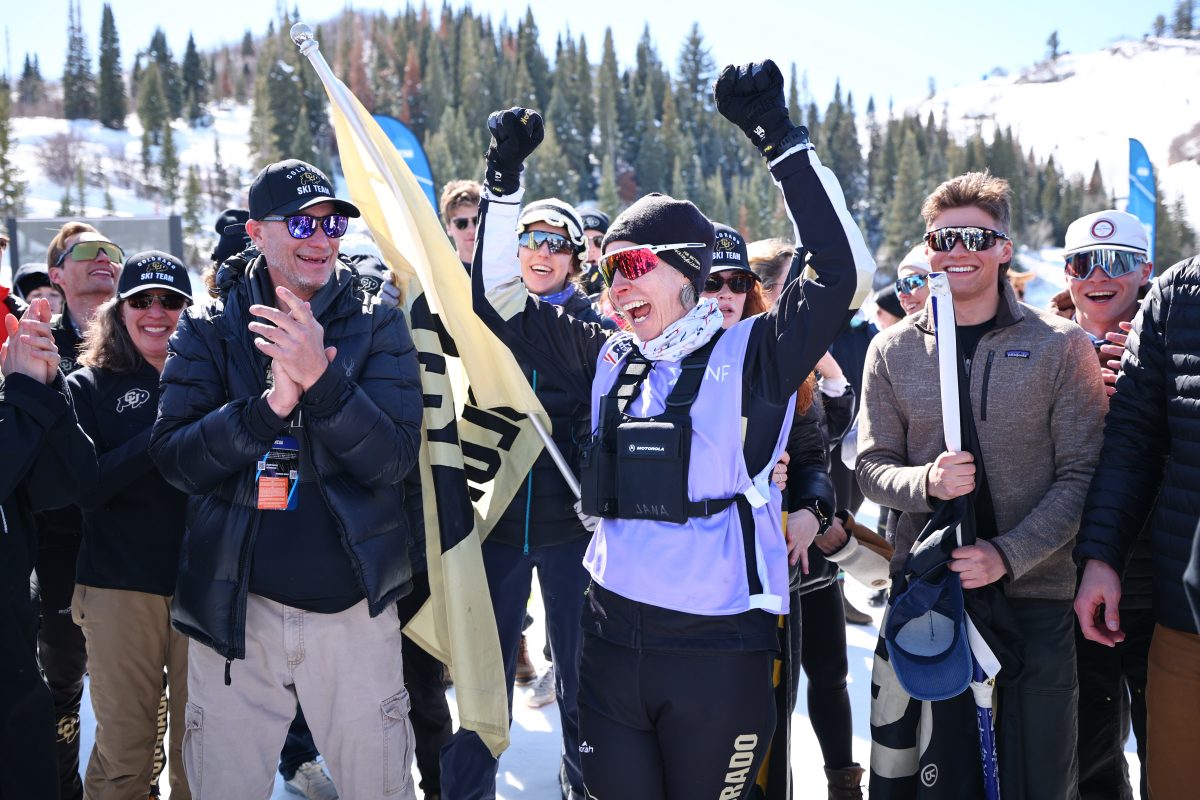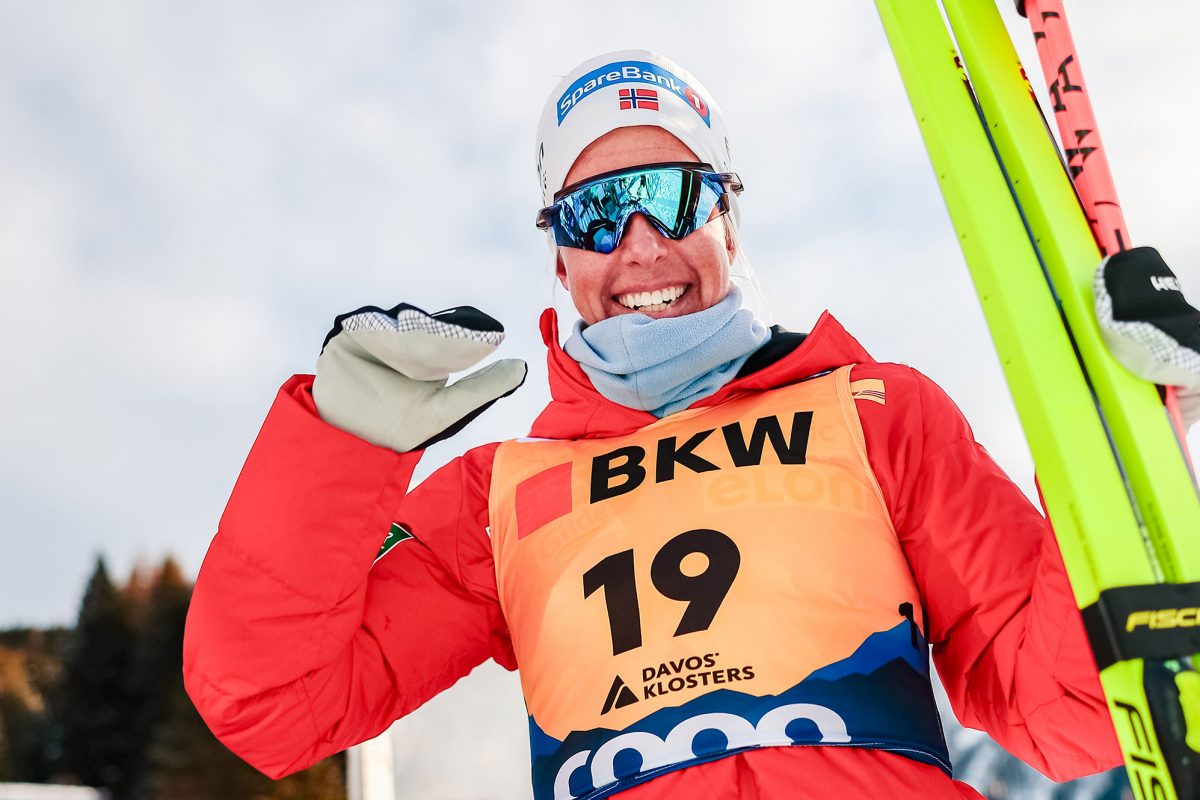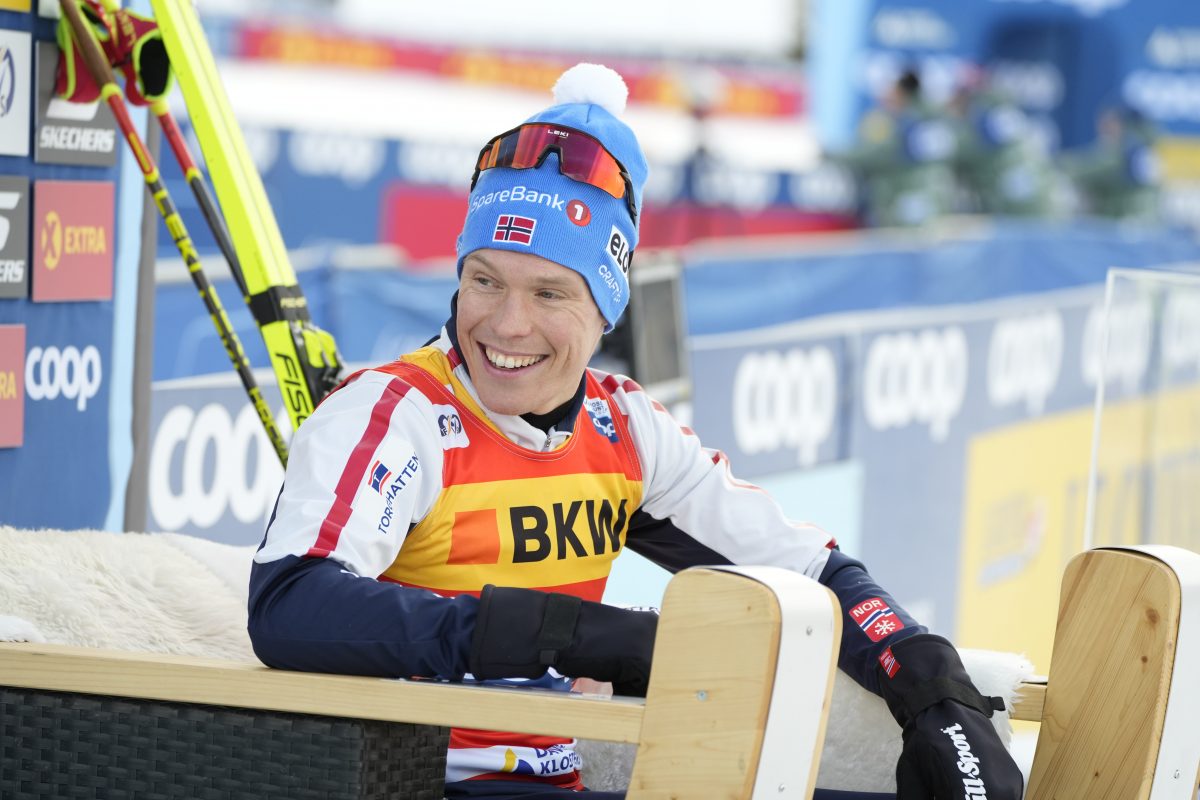
It rained in West Yellowstone on Tuesday. There are thousands of people in town for a ski festival, and it rained.
Against this backdrop, the festival organizers officially designated the South Plateau Whisky trail as the venue for the SuperTour distance race and bumped what is now a 9 k freestyle up to Friday. It wasn’t unexpected — the Rendezvous Trails have received little to no additional snow over the past few days and forecasts have been inconsistently predicting anywhere from none to ten inches of snowfall before Friday.
Athletes of all ages currently in town for the Ski Festival have been skiing almost exclusively on the Plateau since arriving. The skiing has been decent, though rocks are beginning to show through from wear as temperatures everywhere rise above freezing. When the announcement came just before 2:00 pm on Tuesday that the distance race had officially been moved, top-level athletes and coaches had already considered what the change would mean for the principal goal they’re here for: fill the American nation’s group quota at the Canadian World Cups with the best possible skiers.
Is the Plateau venue fair? Several athletes thought it was. SuperTour races were held on the Plateau in 2008, and skiers who were on the circuit then recalled a well-contested race. The only difference this year are the stakes involved.
“Last time seemed like a fair race for everyone. It offered good terrain and was mostly uphill, but it was adequate length and allowed athletes to be on the course without two-way traffic,” said Central Cross Country’s Caitlin Gregg, who was the third-ranked overall skier on the SuperTour in 2012.
Leif Zimmermann (Bridger Ski Foundation) agreed.
“I’ve done the races when they’ve been up here in the past. They’re kind of funky, but they’re fair enough if it’s done properly,” he said. “I think it’s unfortunate because there’s a lot riding on it for the Canadian World Cups. But…we race on weird courses a lot.”
The 9 k point-to-point is a gradual climb that Zimmermann says has very little rest.
“It was hard, with a lot of V2. It’s not a pure ski race; it’s a climb. It’s just a grind the whole way. But either way, if you’re fit and ready for altitude you’re going to do well. So it’s a fair race,” he said.
While the distance race has a set course for now, the location and format of the freestyle sprint has not yet been determined. The original schedule called for a full sprint, but a six person-wide start line is not possible on the narrow logging road that is the South Plateau trail. There isn’t a way for a sprint-length course to loop around without doing a 180-degree turn halfway out. For any kind of sprint to be held in on the Plateau under current conditions, qualifier-only is the lone choice.
Bozeman is also being considered as an alternate sprint venue. Festival director Moira Dow, Bridger Ski Foundation (BSF) director Dragan Danevski and USSA Nordic Manager Joey Caterinichio have discussed their options over the past few days to figure out how to get four races in between the two venues. On Tuesday, Danevski he is confident he can make the freestyle sprint happen at Bohart Ranch. The transplanted event would likely take place on Thursday before the classic sprint and mass start on Saturday and Sunday.
“We’re looking at getting skiers the best race possible,” Dow said. The organizing committee will make a decision about the Saturday sprint on Friday at noon.
“We’re not being selfish about keeping races, but there is a sense of pride in being able to hold them,” Dow said. “It’s not the best atmosphere, but I think people are understanding that this isn’t in our control.”
After waiting for true sprints to come back to West Yellowstone for the past few years, most athletes and coaches were not happy about the prospect of returning to the format just when they’d been about to have rounds on the schedule again these next two weekends.
“[A prologue] is not true sprinting,” said Ryan Scott (Ski & Snowboard Club Vail/Team HomeGrown. “I’ll be prepared for it, but I’m hoping for rounds.”
Coaches were also concerned with having sprint heats given that the events in Montana will be used to select athletes for a World Cup with sprint heats. At the same time, they understood the limitations of current snow conditions and would rather have racing in some form as opposed to nothing at all.
“Ideally we’d be on the normal courses. The sprint course they had planned was a really good one, so I’m bummed they don’t have more snow,” said Alaska Pacific University head coach Erik Flora. “But at the same time I think it’s important that the athletes race this weekend and start the season, so a point-to-point sounds great to me. Some sort of sprint format this week or next week is good also. I’m just glad there are races.”
The 9 k becomes one of two distance races being used to qualify Americans for the World Cups in Canmore. With little resemblance to the terrain there, some lamented that the point-to-point course was a sub-optimal proving ground.
“Is it representative of Canmore? Probably not,” sad SSCV head coach Eric Pepper. “But, it’s what we were dealt with. They’re trying to do the best they can for everybody, and it seems like a pretty fair race.”
Every option is still weather-dependent and there’s time enough left before Friday for changes in snow conditions to potentially make the schedule change again. The weather in Bozeman on Tuesday night was a balmy 45 degrees F, though temperatures are supposed to drop and stay below freezing by next Monday with a chance of snow showers.
Whether four races end up happening in Montana or not, the possibility that there might not has prompted concern that the selection criteria are too dependent on a small number of races in a too-narrow time frame. Pepper and Danevski wondered whether the additional spots for the Quebec and Canmore World Cup team would be better served if the criteria included a FIS-points component, as an athlete’s points take many races to lower over time.
“It would be interesting to have the criteria based on a [combination of] SuperTour standings and FIS points, so the athletes who’ve worked throughout their careers have [more of] a shot,” Pepper said. However, he noted that from his perspective the current system works better for SSCV athletes like Scott, who have fewer starts than the more seasoned SuperTour skiers.
“With these conditions, will we have a good sprint or not? Will we have good races or not?” Danevski said. And if the answer is no, “Are we selecting good skiers?”
Others were content with the current system. Flora, who has four athletes on the U.S. Ski Team, was one of them.
“I’m a fan of these wild card spots. It puts a little pressure on [the athletes] to perform on back-to-back weekends, and then be racing internationally the third weekend.
“Right now I feel like there’s a lot of opportunity for athletes skiing fast to get that experience,” he added, alluding to making the U.S. Ski Team, qualifying for World Cups in Canada, or qualifying for World Cups in Europe as the periodic SuperTour leader.
USSA set the current criteria based on input from coaches at the spring USSA Congress. It includes a discretionary clause that allows USST head coach Chris Grover to consider any “unanticipated failure of objective criteria to select an athlete,” when he makes the team selection on December 3.
According to Caterinichio, she and Grover may use the discretionary clause to revisit the criteria should the need arise, but they have not yet discussed the possibilities.
“If no races got off the ground we’d reconvene and this would come into play,” Caterinichio said. “That would be a meeting with the coaches to come up with [an alternative]. But I think right now we’re having a distance race in West, and you’ve got another week and a half to get one more at West or three more in Bozeman, so the odds are pretty good to conduct races.”
The odds may be good, but there still is an element of uncertainty. Some athletes appeared frustrated by the fluctuating schedule while others chose to not pay it more attention than necessary. Gregg said she is focused on being ready for whatever happens.
“I’m trying to be optimistic about it. I’m feeling good and it’s just one of those things we have to play by ear. We’re doing intervals out here and there are thousands of people we’re trying to get around.
“I think we’ll make it happen and they’ll make a fair team for the World Cups,” she said.
Audrey Mangan
Audrey Mangan (@audreymangan) is an Associate Editor at FasterSkier and lives in Colorado. She learned to love skiing at home in Western New York.



